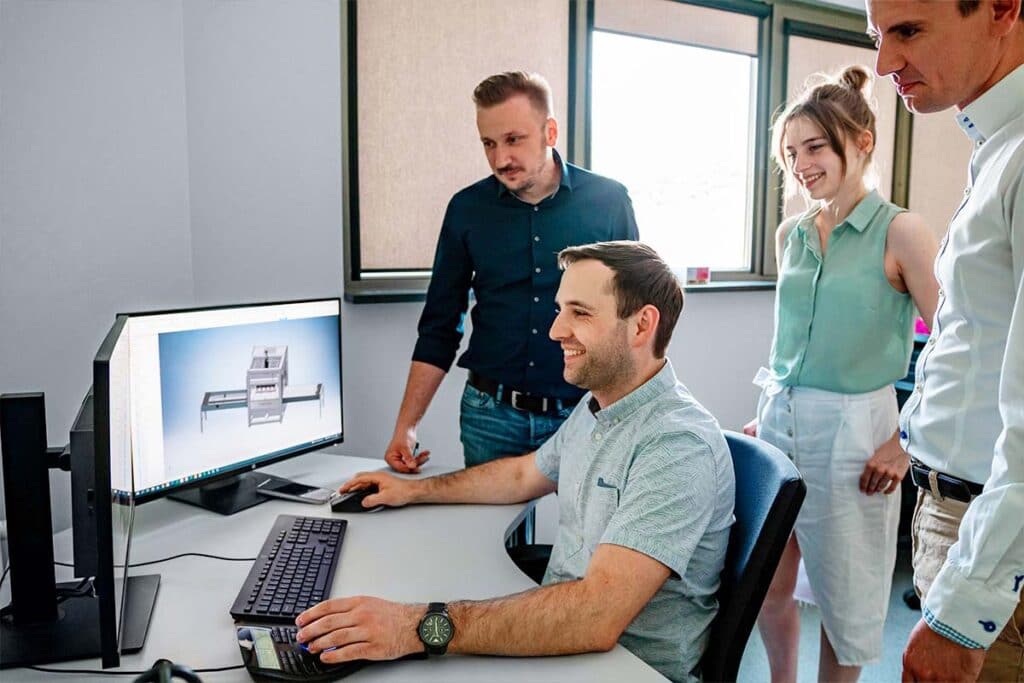A machine – regardless of the characteristics of a given device – is a product that requires special attention to detail at every stage of the process of its creation. Concept, design, construction, analysis of correct operation – each of these periods is characterized by different specifics, but they all share one denominator. It’s quality – fundamental to the final effect.
The design and construction of the machine can be divided into several stages, without which it is difficult to imagine the effective execution of the device. Although each industry has its own specificity – so, for example, the issue of design or tests is adapted to it – there is no lack of common denominators that form the basis for their preparation. Regardless of the industry in which the machine will be used, the process of its creation step by step turns out to be similar. Which stages should be considered most important?
Stage 1. From concept to design
Assumptions regarding the functionality of the machine are developed during conceptual work – on the details of the project, the possibility of innovation or optimization of production costs. The first stage includes the creation of construction sketches based on the general expectations of customers.
In a situation where the design office is responsible for the implementation of customer goals and requirements, it is necessary to perceive the process comprehensively, but also pay attention to details. The location of small elements – any given screw or an equally small element – can affect more or less effective operation of the device.
The initial outline of the project must therefore consider both the client’s expectations and technical possibilities – the engineer responsible for the implementation is in a demanding position, balancing between the investor’s vision and theoretical knowledge and practice. However, having already made the initial draft of the project, he can proceed to form a general idea for the device. The draft is of a general nature – only in the next stages comes the time to specify the design or create a schedule for the time when production starts.
Stage 2. Modeling and visualization
Modern computer technology makes it possible to test the machine even before it is built. Software allowing modeling of parts and their 3D analysis allows designer to prepare a simulation of the device’s operation. This way, designer can make possible corrections or implement technologies that improve the operation of the equipment.
CAD design plays a special role in this regard. The operation based on geometric modeling of the structure allows easy construction of tools and verification of their operation in an interactive way – based on visualization. This solution, which is particularly important in the context of cost and operation optimization – even at the design stage, allows you to adjust the operation of the device so that from the technical side you can immediately start creating the right model.
Stage 3. Construction of the machine or device
Correct modeling of the project opens the way to the next stage – the construction of the machine. The important factor is whether the designed and built machine is intended for own purposes or, for example, to be introduced to the market for sale. It should be remembered that in such a situation the manufacturer must demonstrate compliance with specific product requirements – e.g., creating a list of device components or providing designs, analyzes, calculations or technical drawings. What else is important is the analysis of the data sheets and detailed product descriptions. The technical documentation collected during the construction of the machine should contain not only a general description of the machine, but also diagrams of control circuits, market description, certificates or a specialized risk assessment.
Thus, the construction of a machine should be understood as its physical creation, but at the same time care for the formal side documenting the process of its implementation.
Stage 4. Software preparation
It is difficult to imagine modern machine park based on devices that do not use the possibilities offered by electronics, the Internet and IoT technology or cybernetics in general. Hence, after the device has been physically built, the natural stage is to refine the firmware and the software sphere – e.g., to prepare algorithms for the use of applications or cloud solutions. The widespread automation of production processes make the correct software the foundation for the operation of the device – although in most cases the element itself, the object, is perceived as the key. Without technological support, it will not be effective enough.
Stage 5. Technical analysis of equipment
The creation of a device or tool is only an introduction to quality tests before the start of the production cycle or redirection of the machine to the sales market. It must undergo a meticulous technical analysis, verification in terms of quality and safety. Although some potential problems can be eliminated at the design stage, verification of proper operation is a kind of opening the door to widespread use – for own purposes or for sales.




